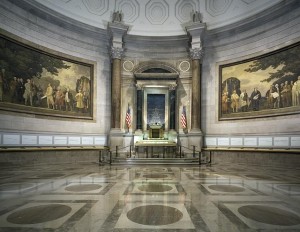National Handwriting Day stresses the importance of legibility. The day honors John Hancock’s birthday. John Hancock clearly and prominently signed the Declaration of Independence. Idea: Children could write, using their best penmanship, a thank you note to someone.
George Walton died in Augusta, Georgia, on February 2, 1804. He was born near Farmville, Virginia, 1741, but his exact birth date is unknown. Representing Georgia, he signed the Declaration of Independence. He fought for his state militia during the Revolutionary War and was caught by the British in late 1778. He was imprisoned until September 1779, when he was exchanged for a British officer. After the war, he served as Georgia’s governor, a United States senator, and the chief justice of Georgia’s highest court. Children could learn more at: George Walton.
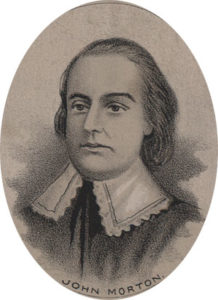 John Morton died in 1777. His date of birth is unknown. Active in politics, he was elected from Pennsylvania to serve in both the First Continental Congress and the Second Continental Congress. He signed the Declaration of Independence, and he was part of the committee that wrote the Articles of Confederation. He was the first Declaration of Independence signer to die. Children could learn more at: John Morton.
John Morton died in 1777. His date of birth is unknown. Active in politics, he was elected from Pennsylvania to serve in both the First Continental Congress and the Second Continental Congress. He signed the Declaration of Independence, and he was part of the committee that wrote the Articles of Confederation. He was the first Declaration of Independence signer to die. Children could learn more at: John Morton.
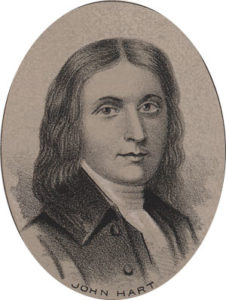
John Hart
John Hart, one of the signers of the Declaration of Independence, died in 1779 in Hopewell, New Jersey. He was born around 1711 in Stonington, Connecticut, but his exact date of birth is unknown. He represented New Jersey at the signing. When the British attacked New Jersey, they placed a bounty on Hart. He was forced to hide. When he was finally able to return to his farm, he found that his wife had died and that his children had moved. Children could learn more at: John Hart.
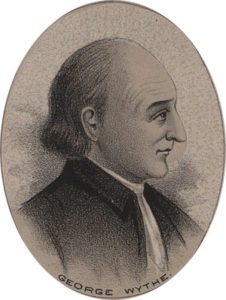 George Wythe died in 1806 in Richmond, Virginia. He was born in Elizabeth City, Virginia, probably in the year 1726. The exact date of his birth is unknown. Representing Virginia, he was one of the signers of the Declaration of Independence. He also attended the Constitutional Convention. A lawyer, he was a mentor to Thomas Jefferson and James Monroe. Sadly, he was murdered by a nephew seeking Wythe’s fortune. Children can learn more at: George Wythe.
George Wythe died in 1806 in Richmond, Virginia. He was born in Elizabeth City, Virginia, probably in the year 1726. The exact date of his birth is unknown. Representing Virginia, he was one of the signers of the Declaration of Independence. He also attended the Constitutional Convention. A lawyer, he was a mentor to Thomas Jefferson and James Monroe. Sadly, he was murdered by a nephew seeking Wythe’s fortune. Children can learn more at: George Wythe.
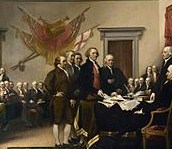
Committee of Five
Continental Congress in 1776 organized the Committee of Five to write the Declaration of Independence. The committee was comprised of Benjamin Franklin, Thomas Jefferson, Roger Sherman, John Adams, and Robert Livingston. The group met and decided that Thomas Jefferson would write the first draft. He worked on the document over the next few days, and then the group edited his work. The committee presented their work to the full Continental Congress on June 28, 1776. Children could view a bas relief of the five at: Committee of Five.
National Archives and Records Administration (NARA) was created in 1934. It centralizes federal documents and makes them available to the public. The National Archives Building in Washington, DC, houses originals of the Declaration of Independence, the Constitution, and the Bill of Rights. One of the four copies of the Magna Carta is also there. Children can visit the National Archives website at: http://www.nara.gov.
Matthew Thornton died in Newburyport, Massachusetts, in 1803. 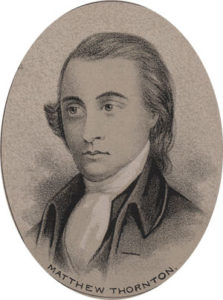 Representing New Hampshire, he signed the Declaration of Independence. His exact date of birth is unknown, but scholars know he was born in Ireland. He was a physician and did not marry until he was 46 years old. He helped establish New Hampshire’s constitution and also served as a judge. Children can learn more at: Matthew Thornton.
Representing New Hampshire, he signed the Declaration of Independence. His exact date of birth is unknown, but scholars know he was born in Ireland. He was a physician and did not marry until he was 46 years old. He helped establish New Hampshire’s constitution and also served as a judge. Children can learn more at: Matthew Thornton.
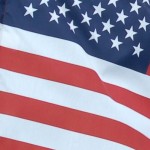 Declaration of Independence resolution was passed in 1776 by the Continental Congress. This step allowed for the adoption of the Declaration of Independence on July 4, 1776. Children can learn more at: Declaration.
Declaration of Independence resolution was passed in 1776 by the Continental Congress. This step allowed for the adoption of the Declaration of Independence on July 4, 1776. Children can learn more at: Declaration.
 United States celebrates Independence Day. It declared itself free of English rule in 1776. Interestingly, only two people, John Hancock and Charles Thompson, signed the Declaration of Independence that day. Most of the representatives signed the document on August 2, 1776. Idea: Children could read Fireworks, Picnics, and Flags: The Story of the Fourth of July Symbols by James Cross GIblin and Ursula Arndt. Children could plan and carry out a Fourth of July parade. They could also learn more at: Fourth of July.
United States celebrates Independence Day. It declared itself free of English rule in 1776. Interestingly, only two people, John Hancock and Charles Thompson, signed the Declaration of Independence that day. Most of the representatives signed the document on August 2, 1776. Idea: Children could read Fireworks, Picnics, and Flags: The Story of the Fourth of July Symbols by James Cross GIblin and Ursula Arndt. Children could plan and carry out a Fourth of July parade. They could also learn more at: Fourth of July.
